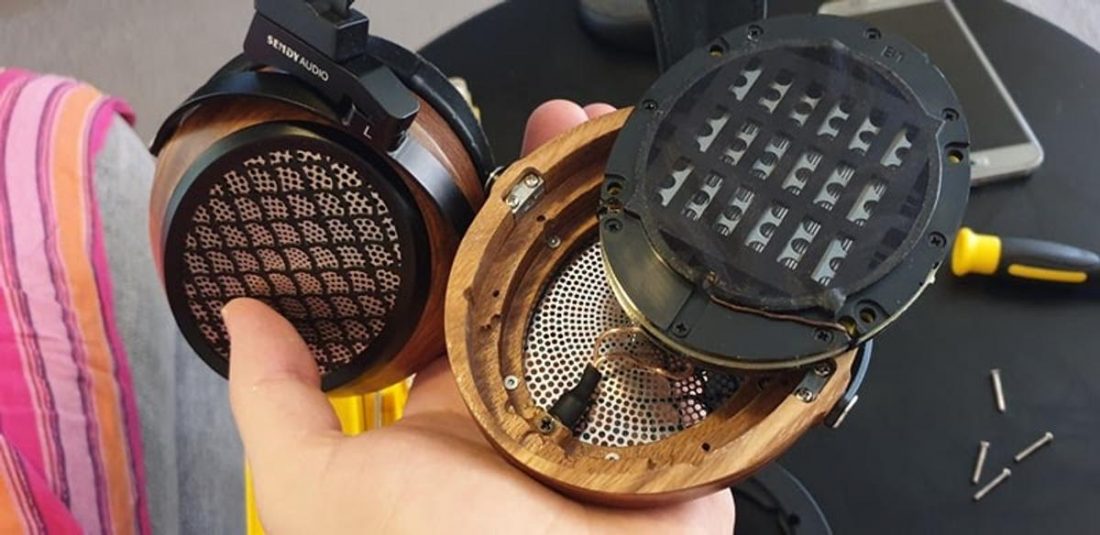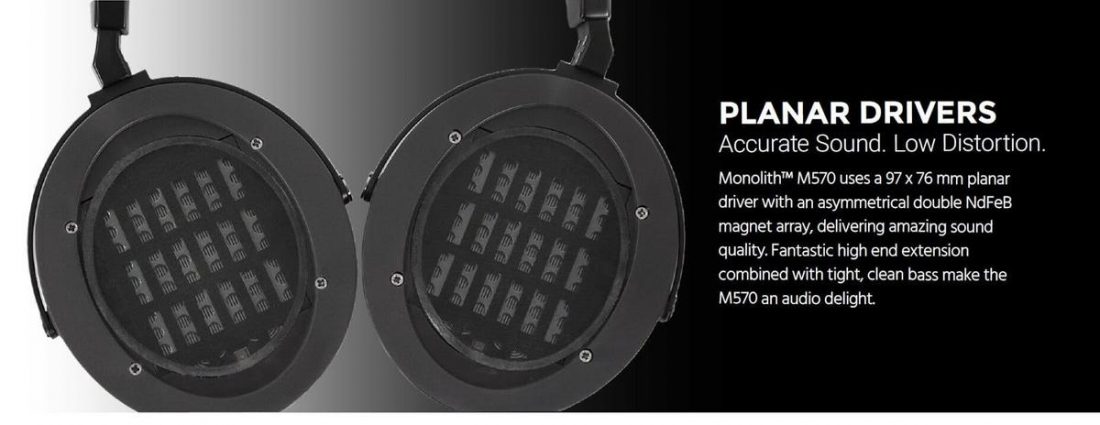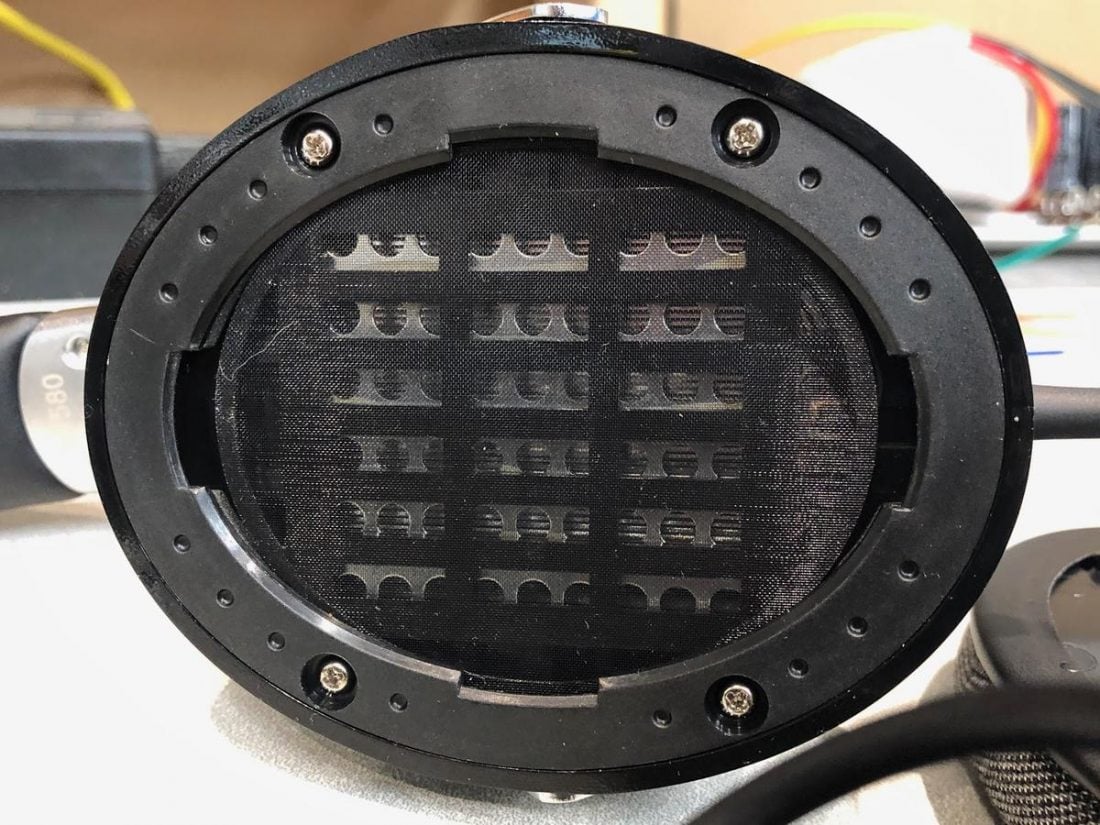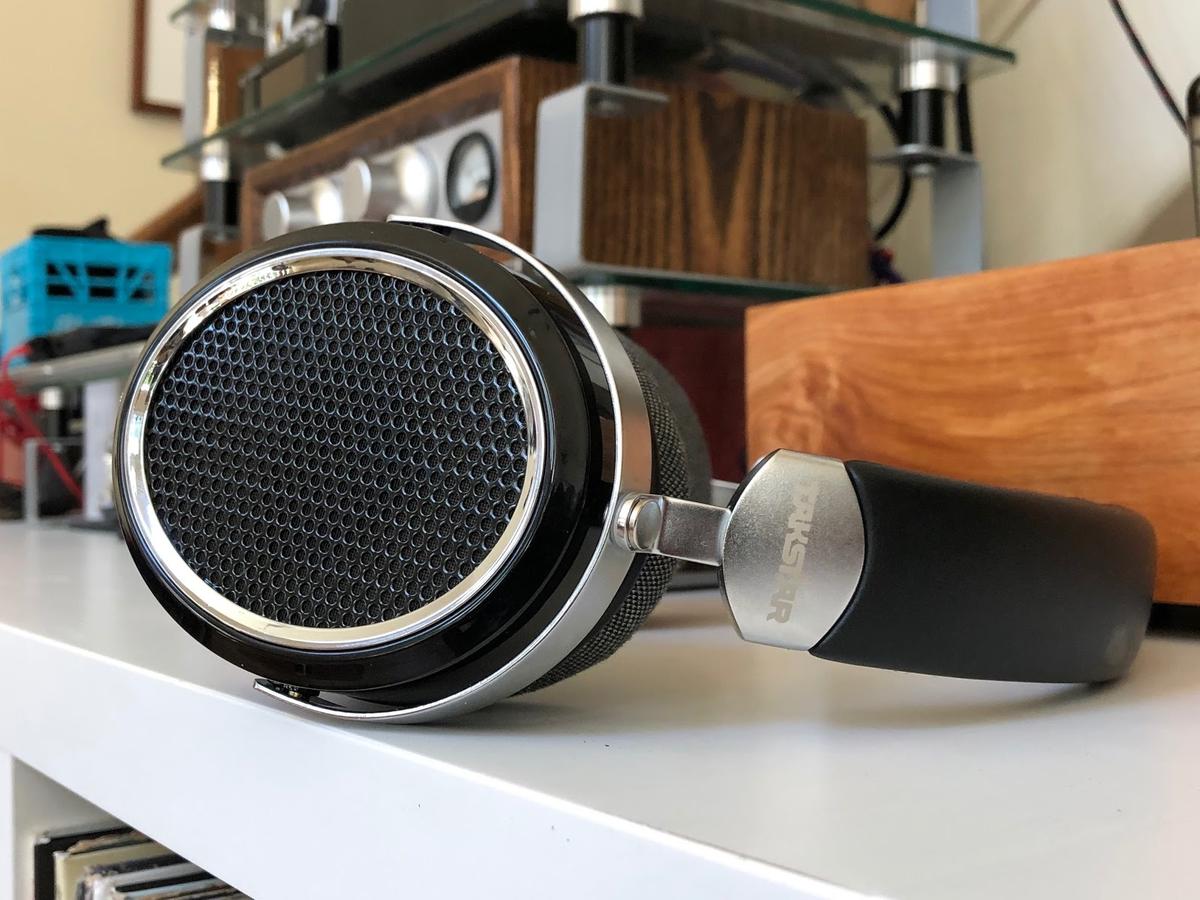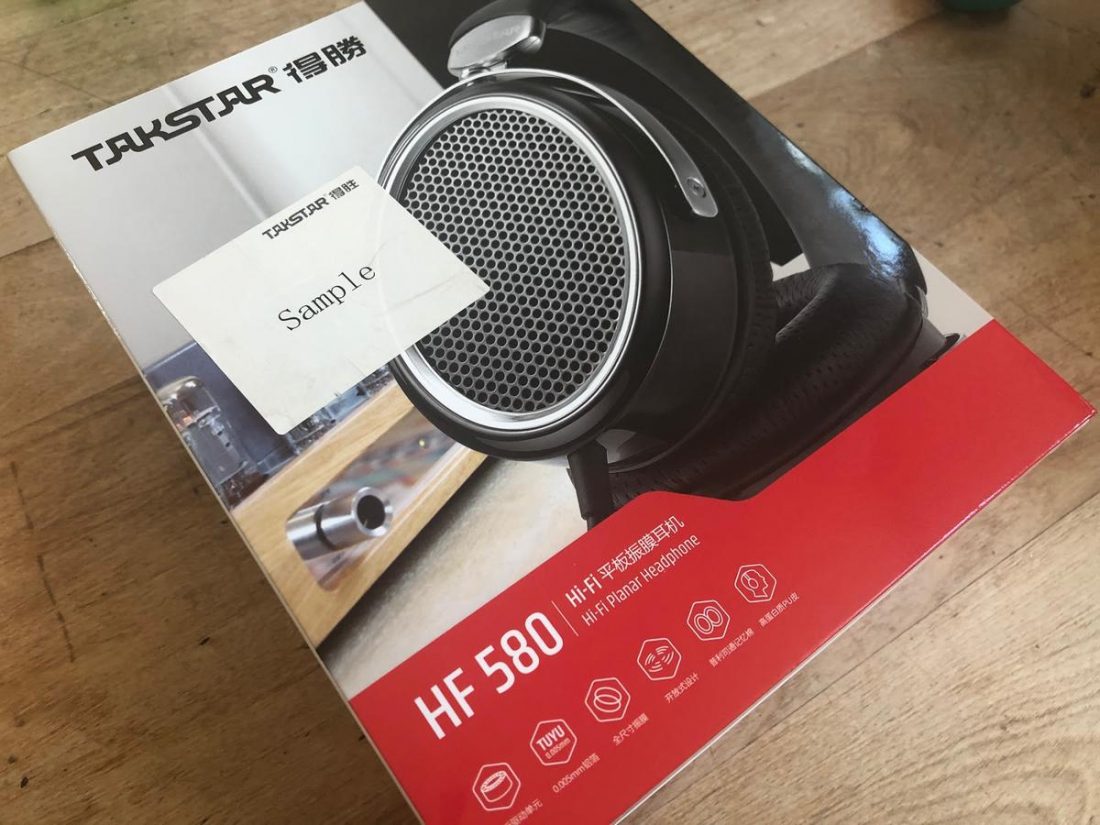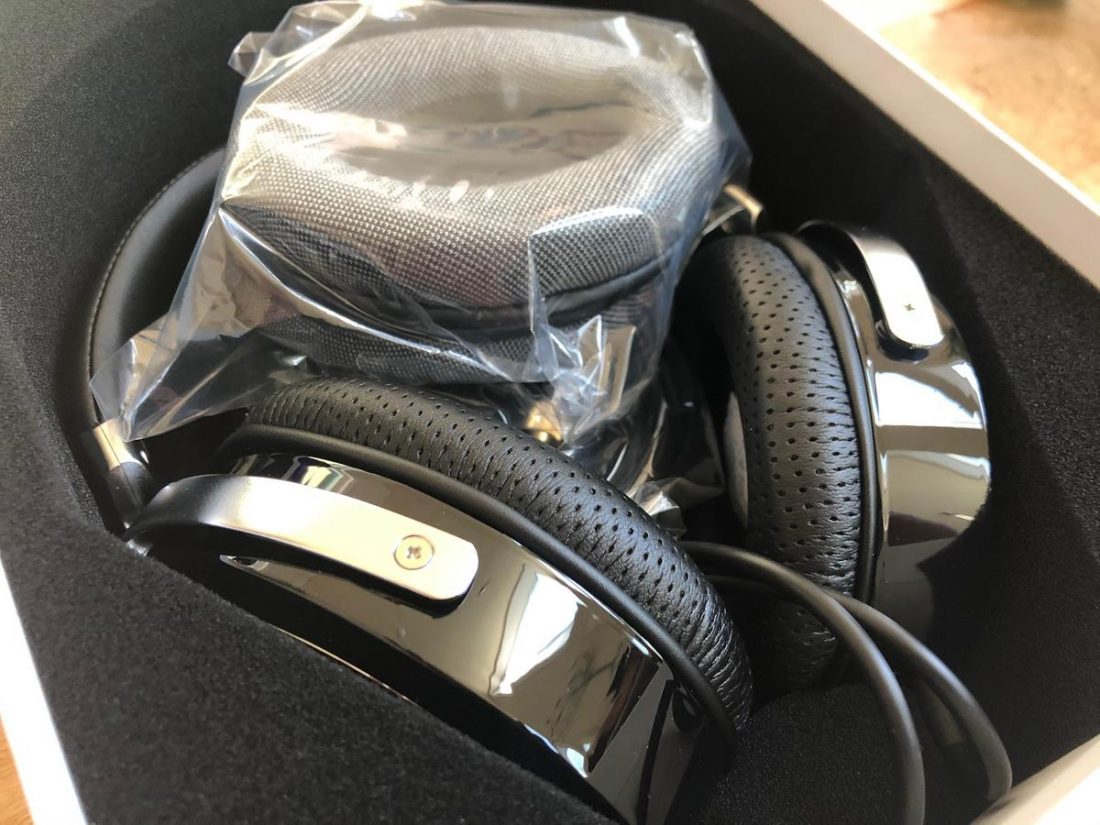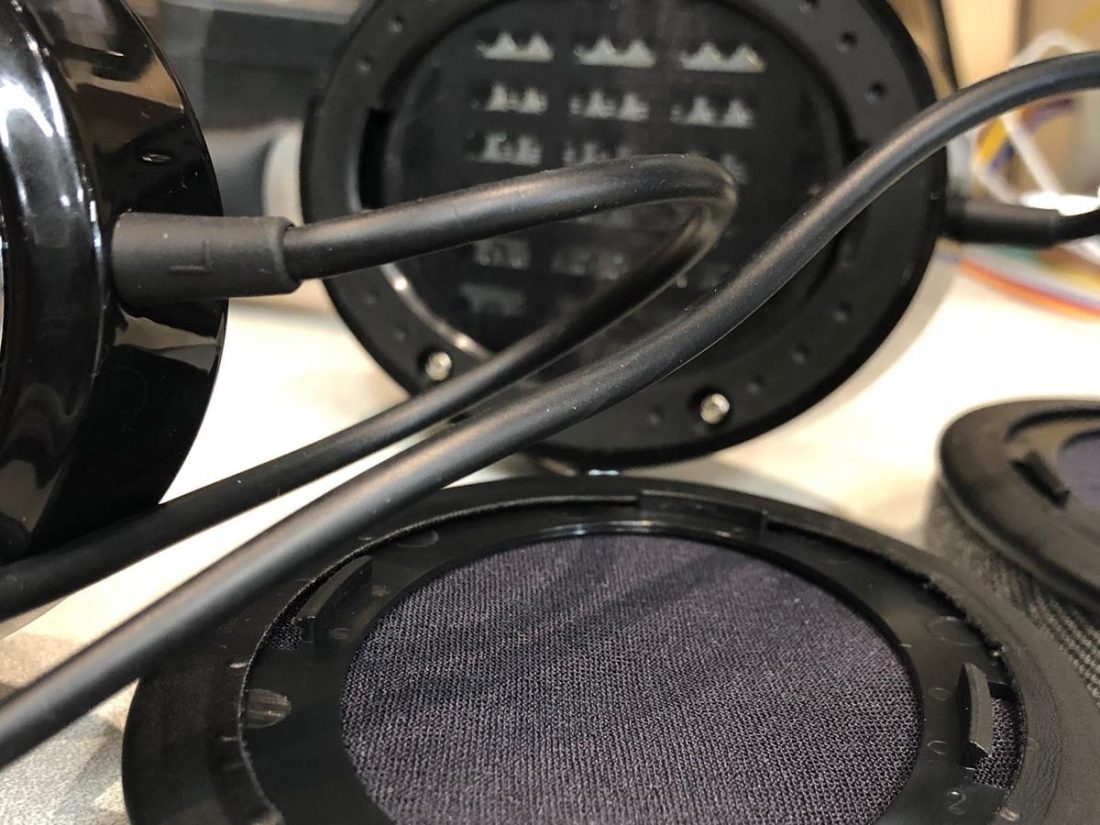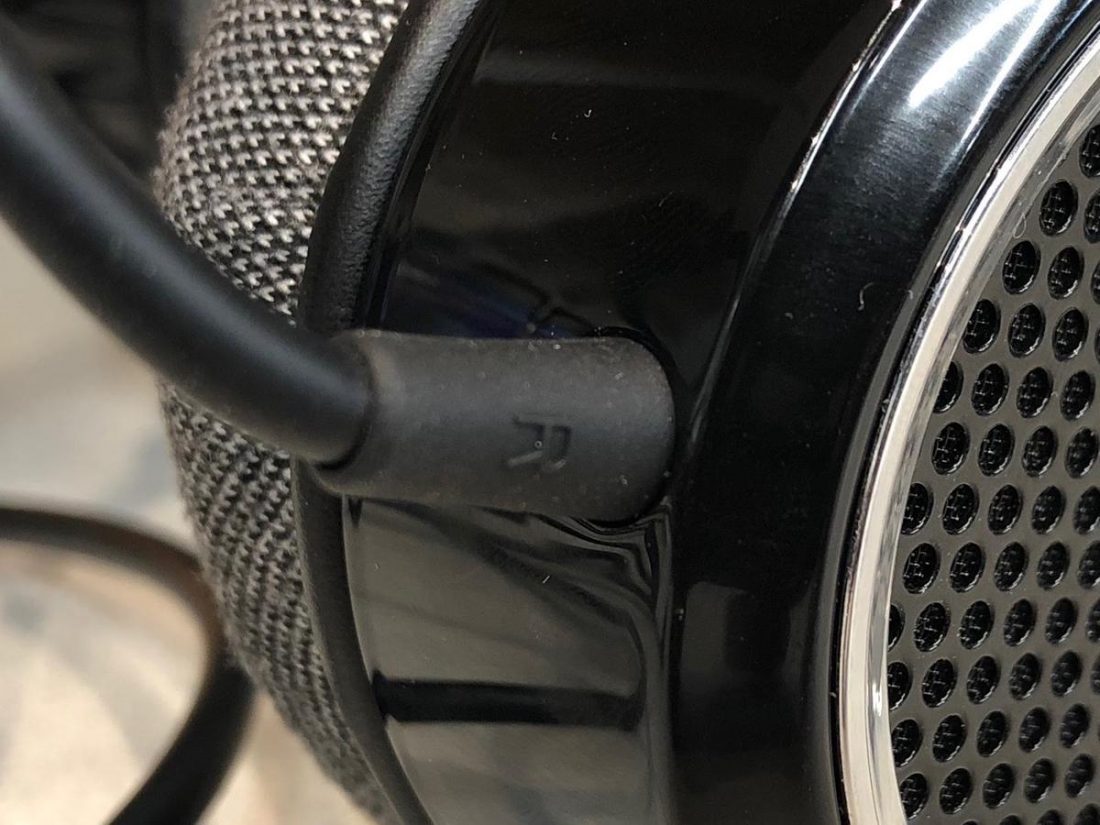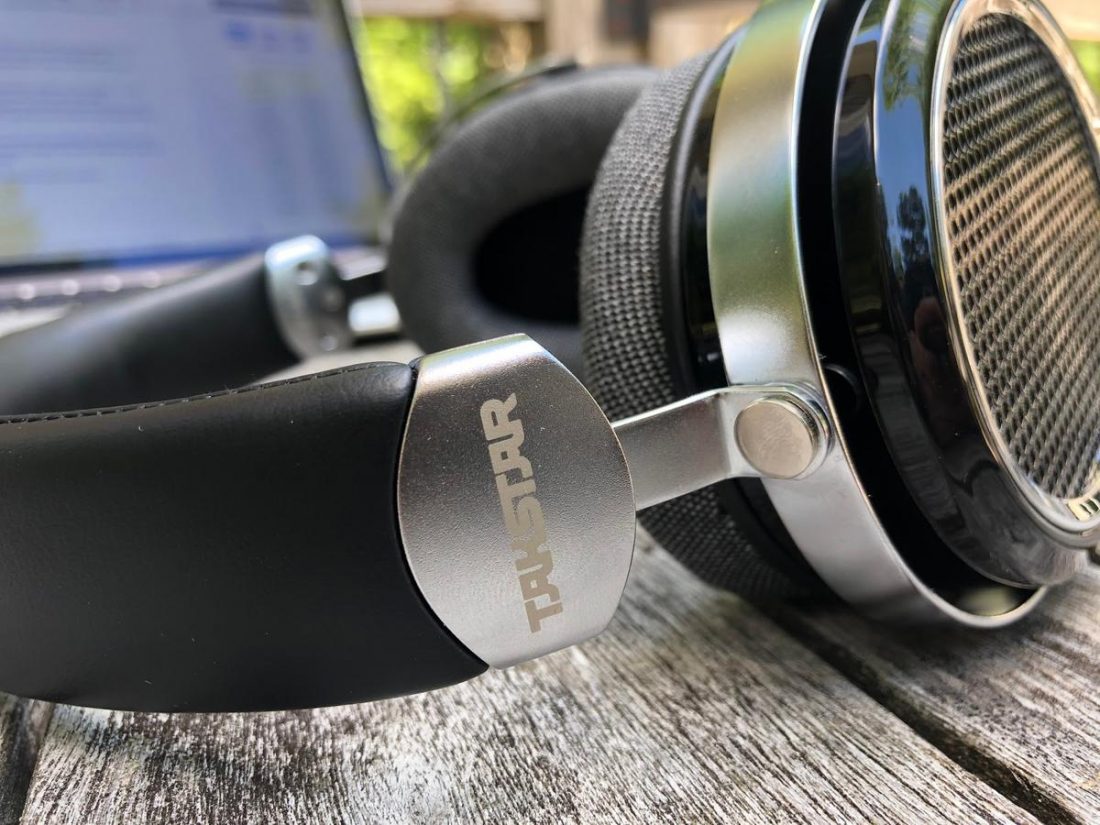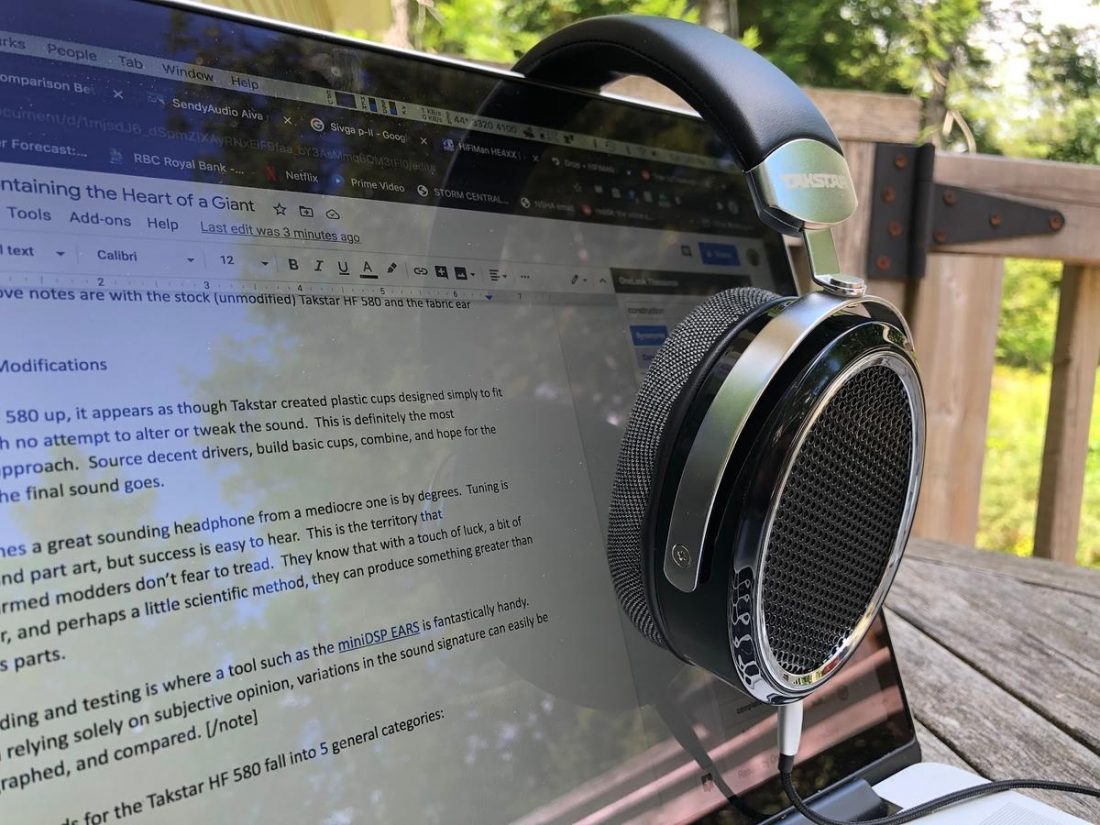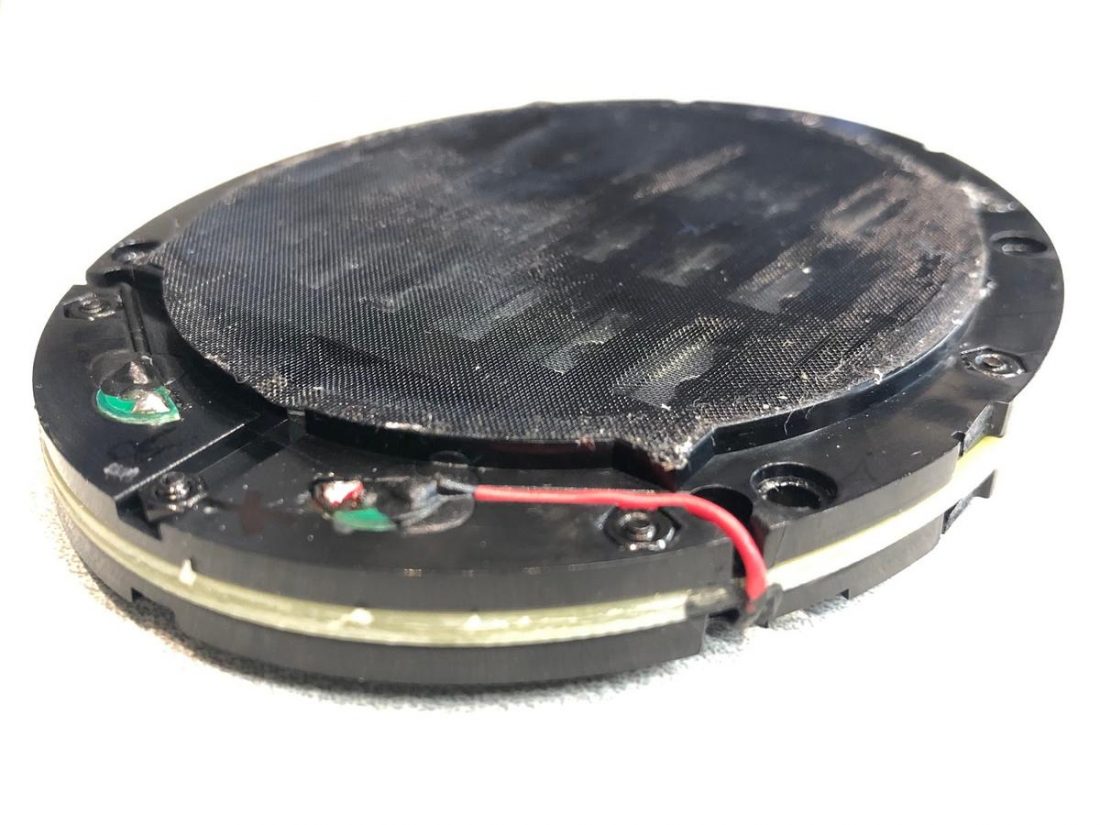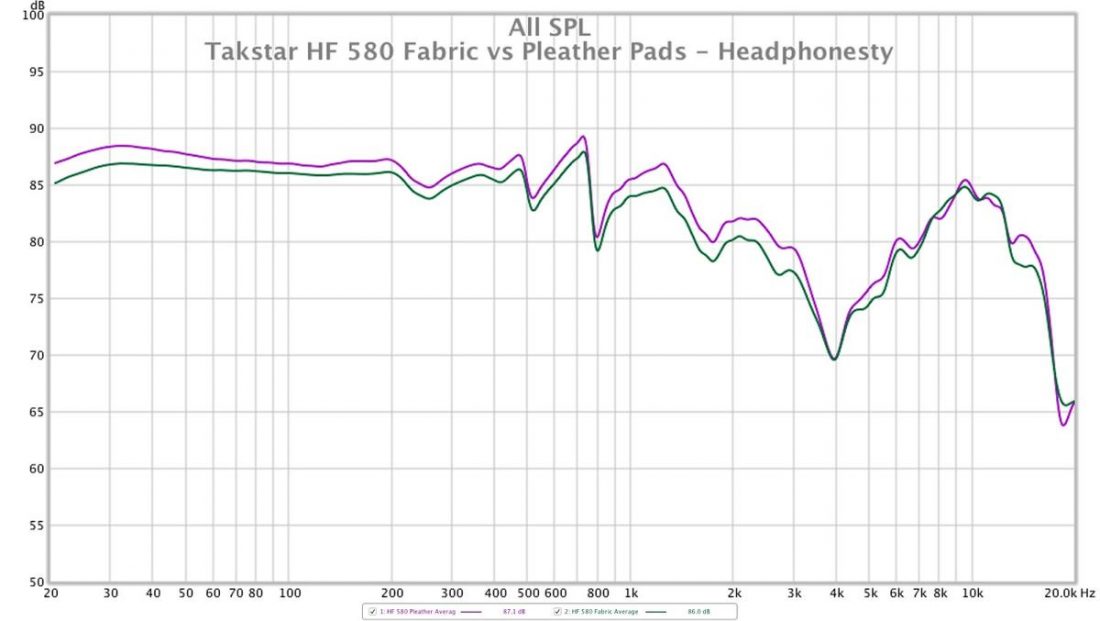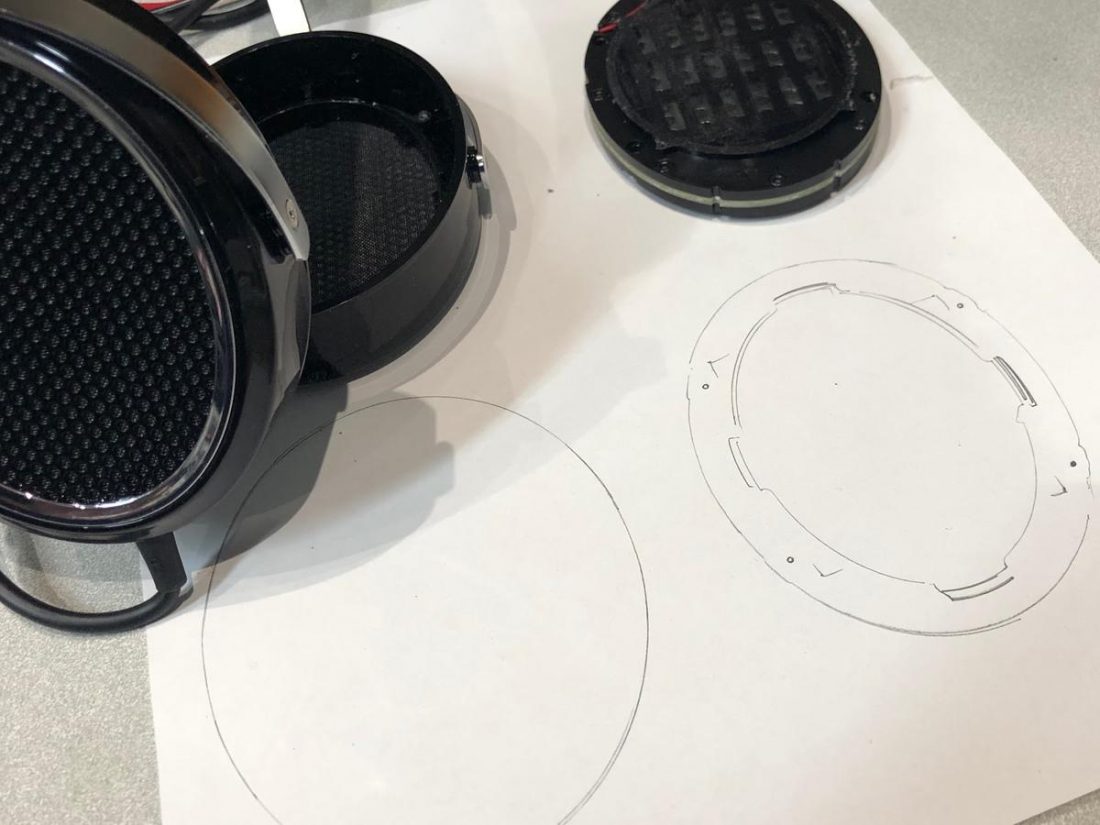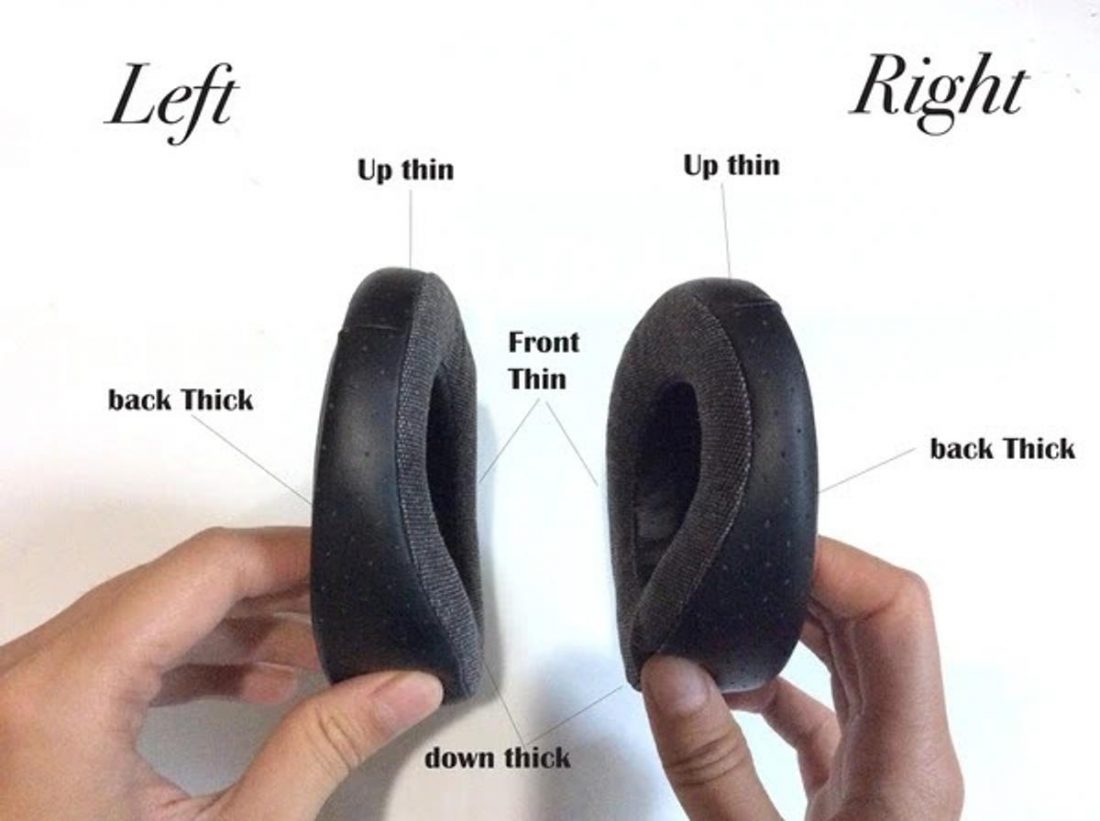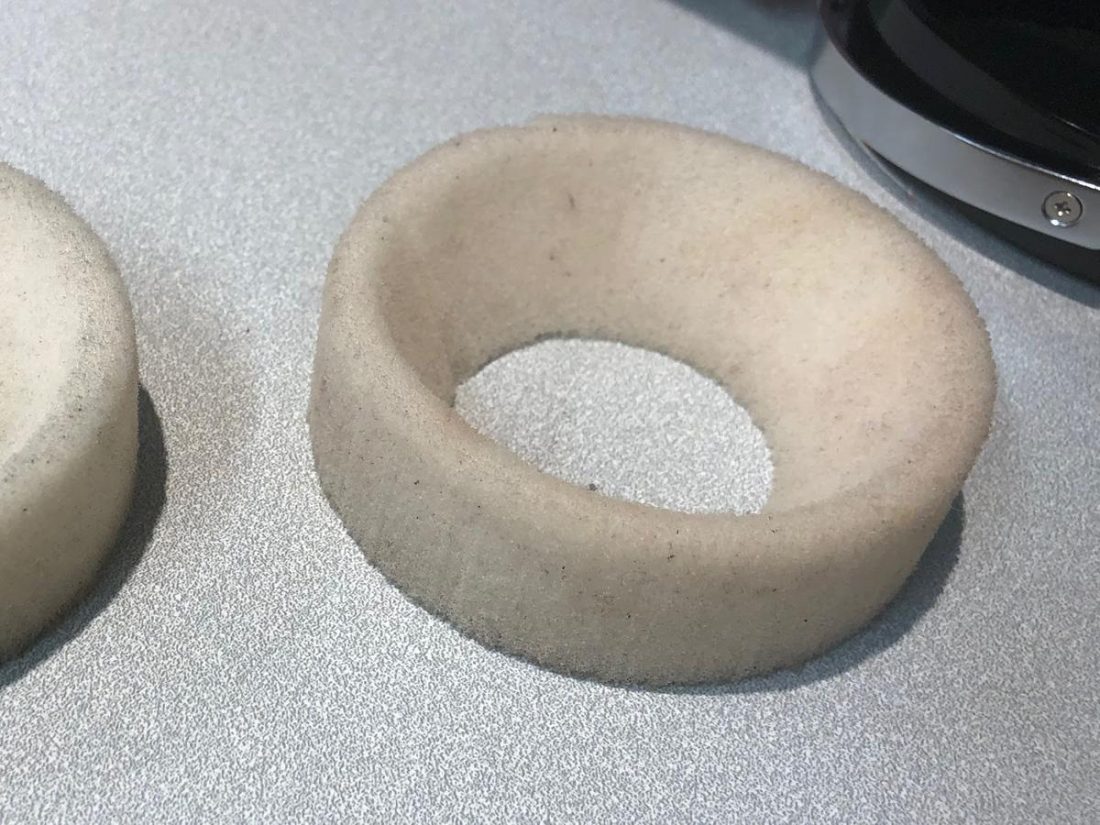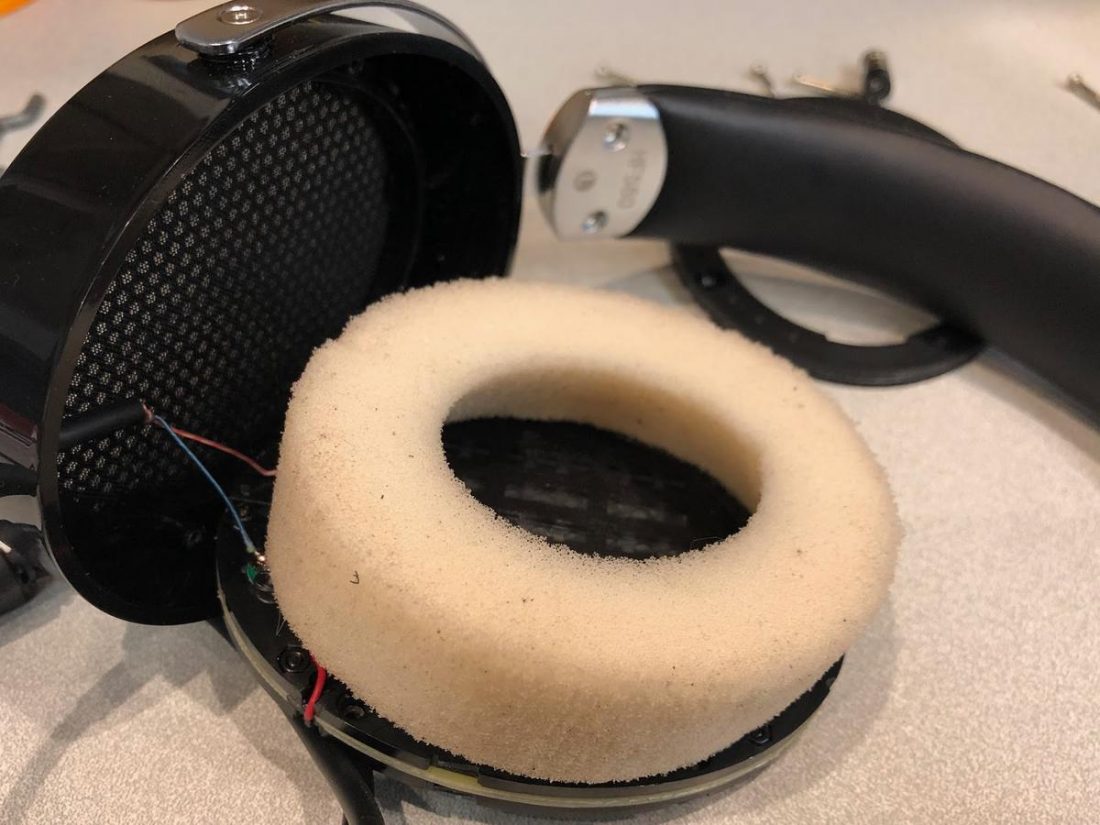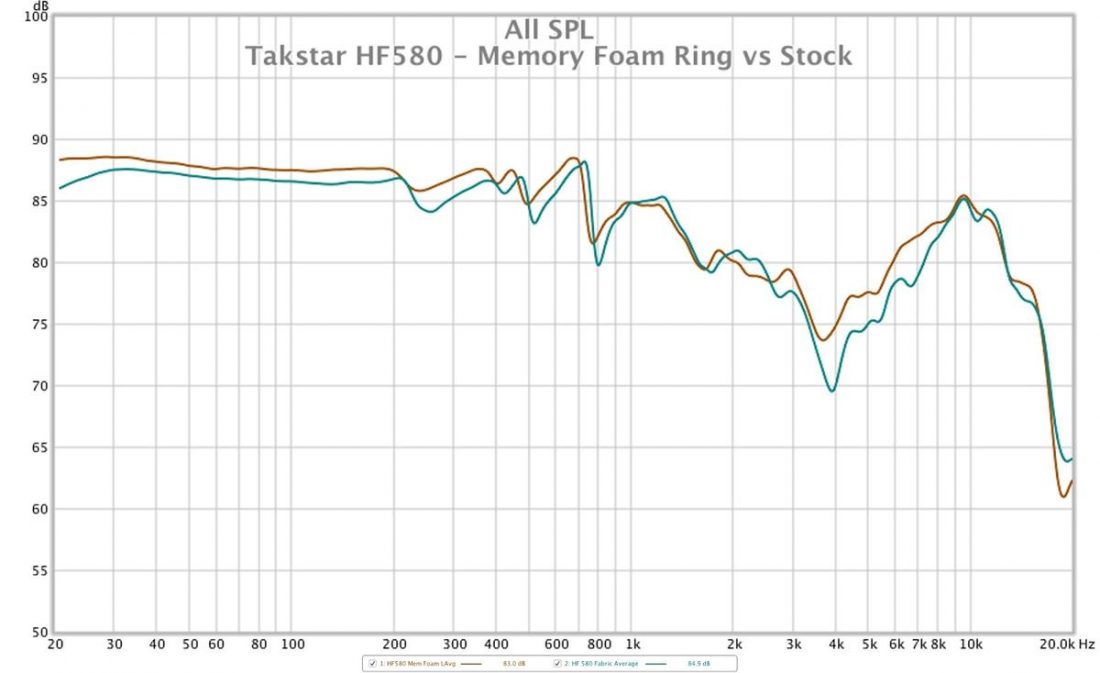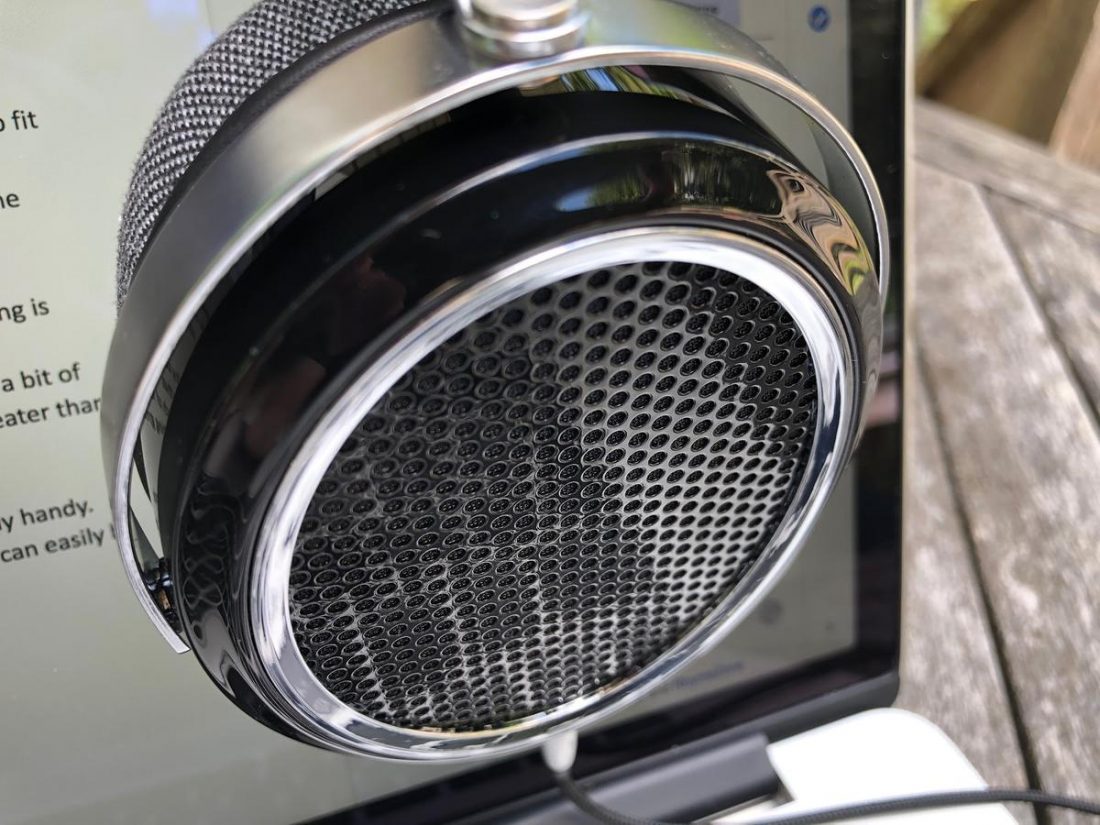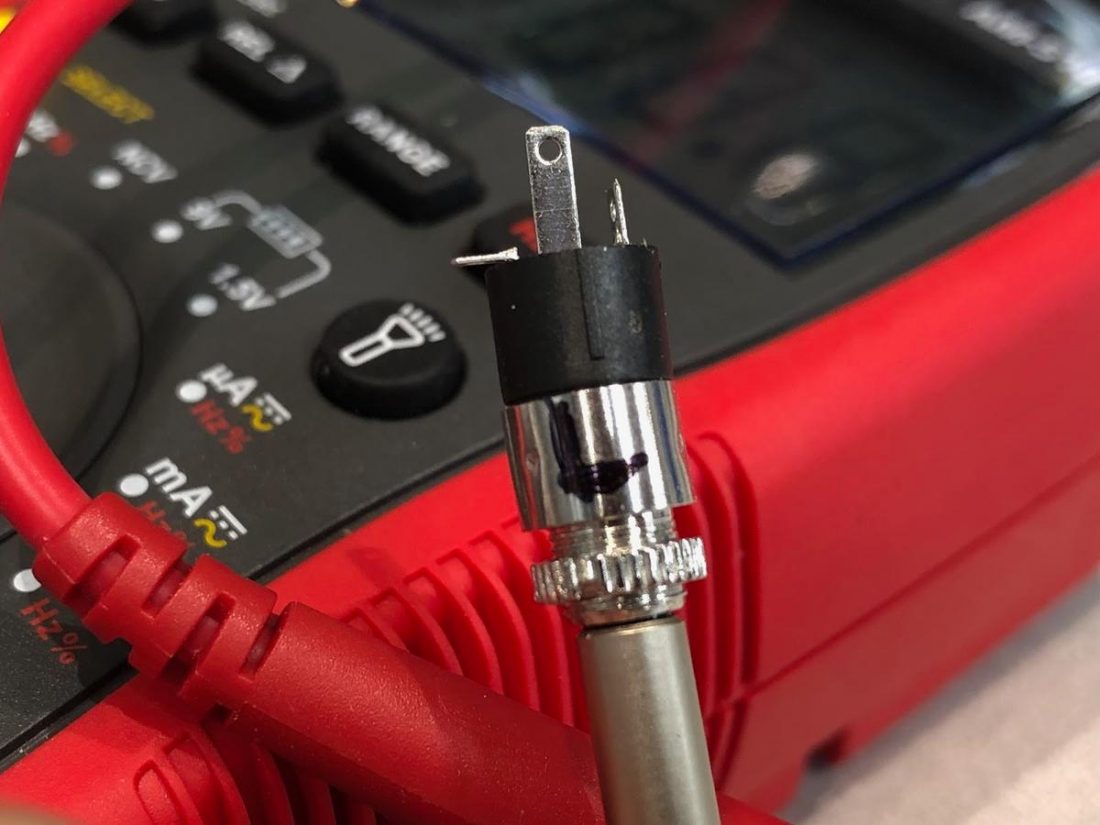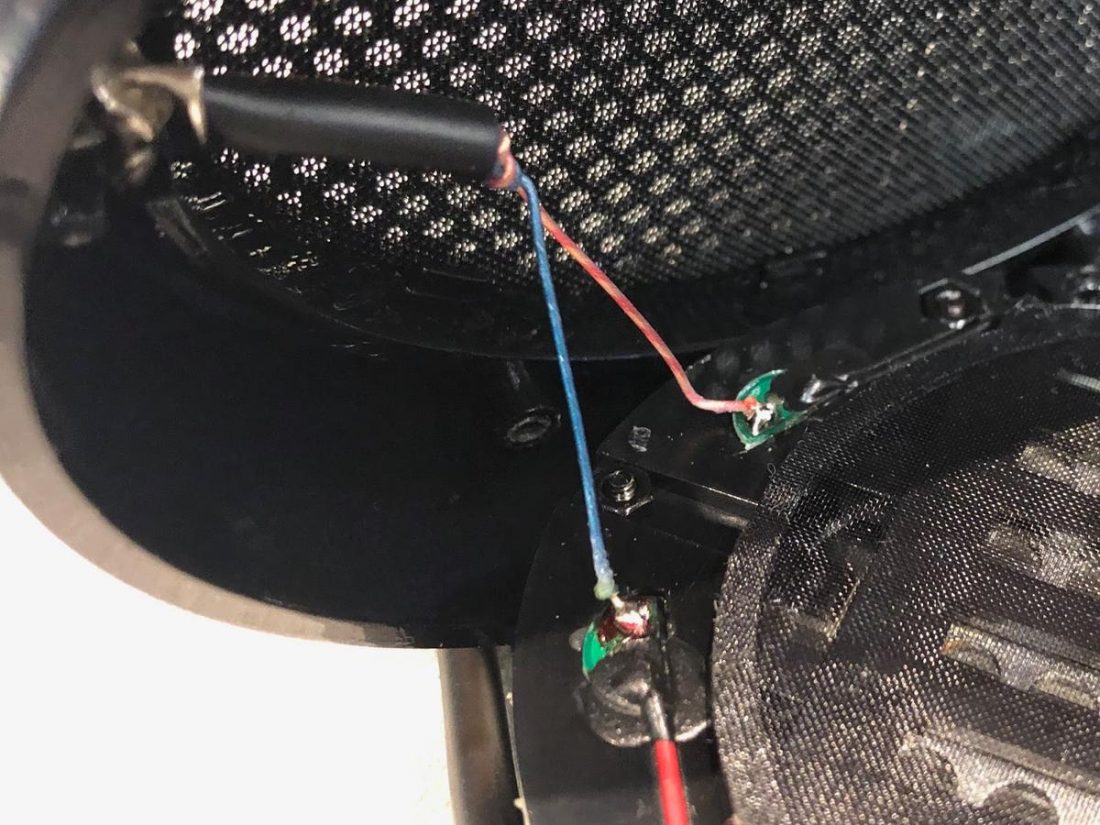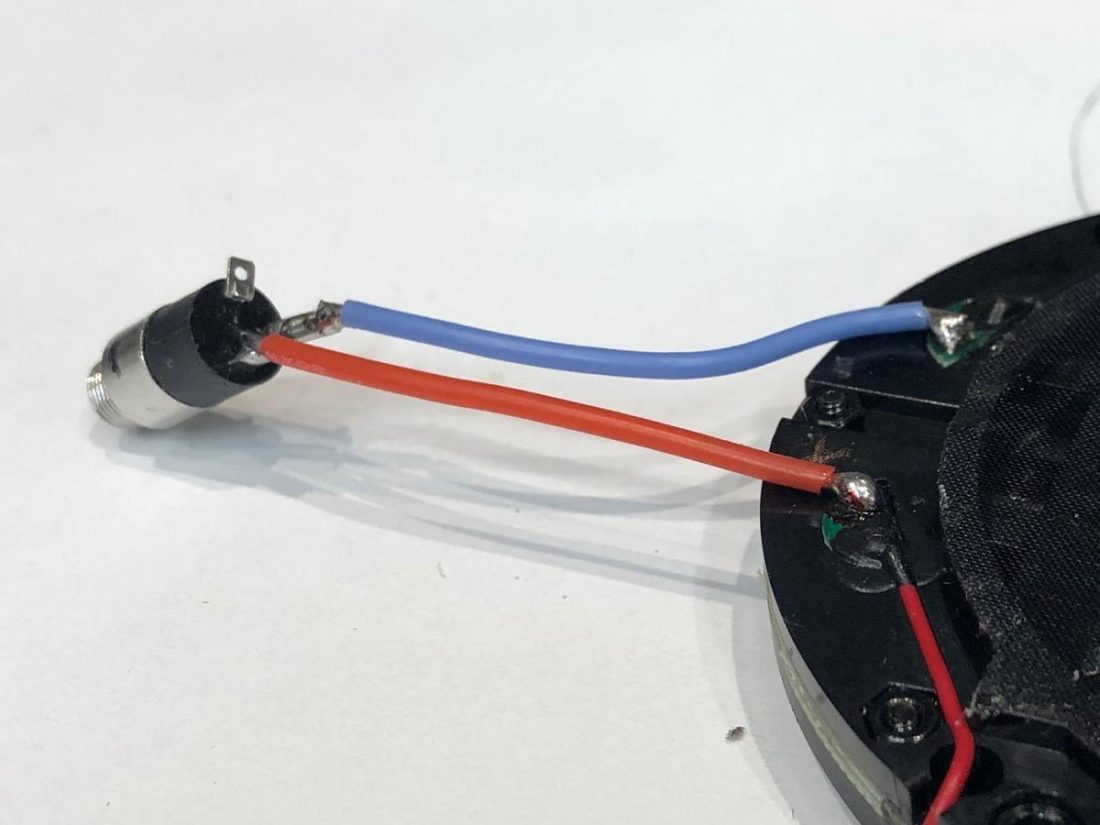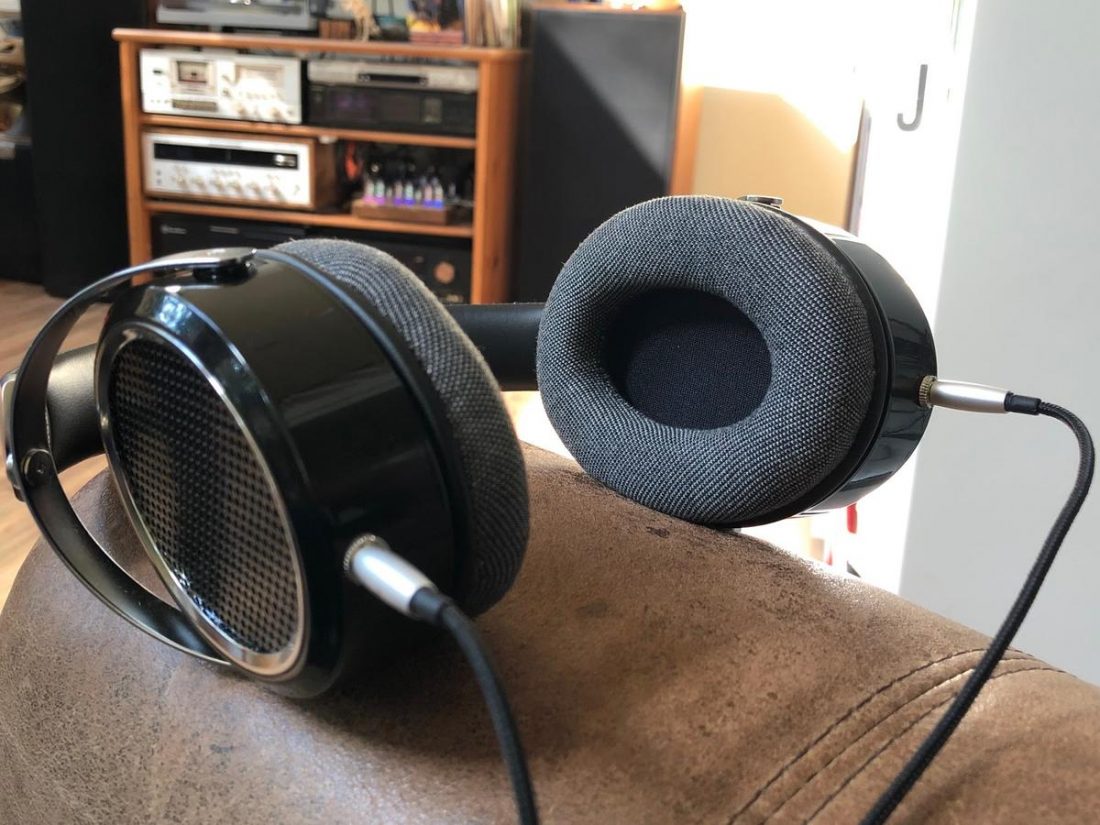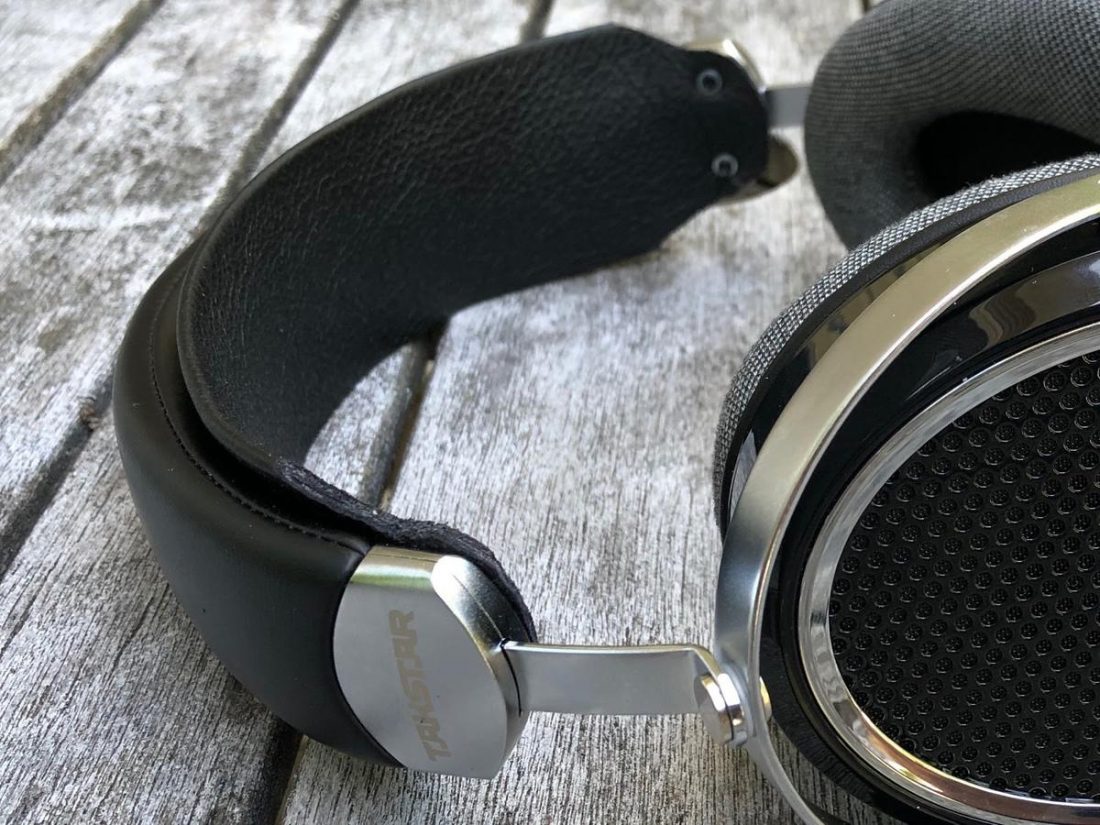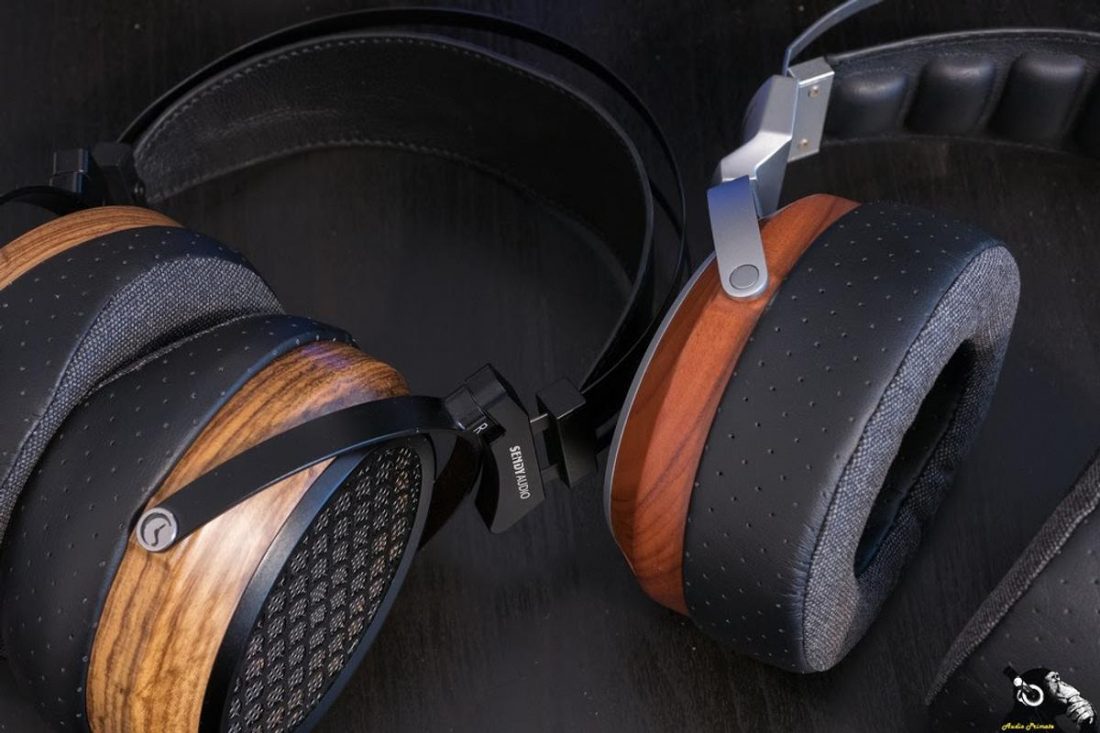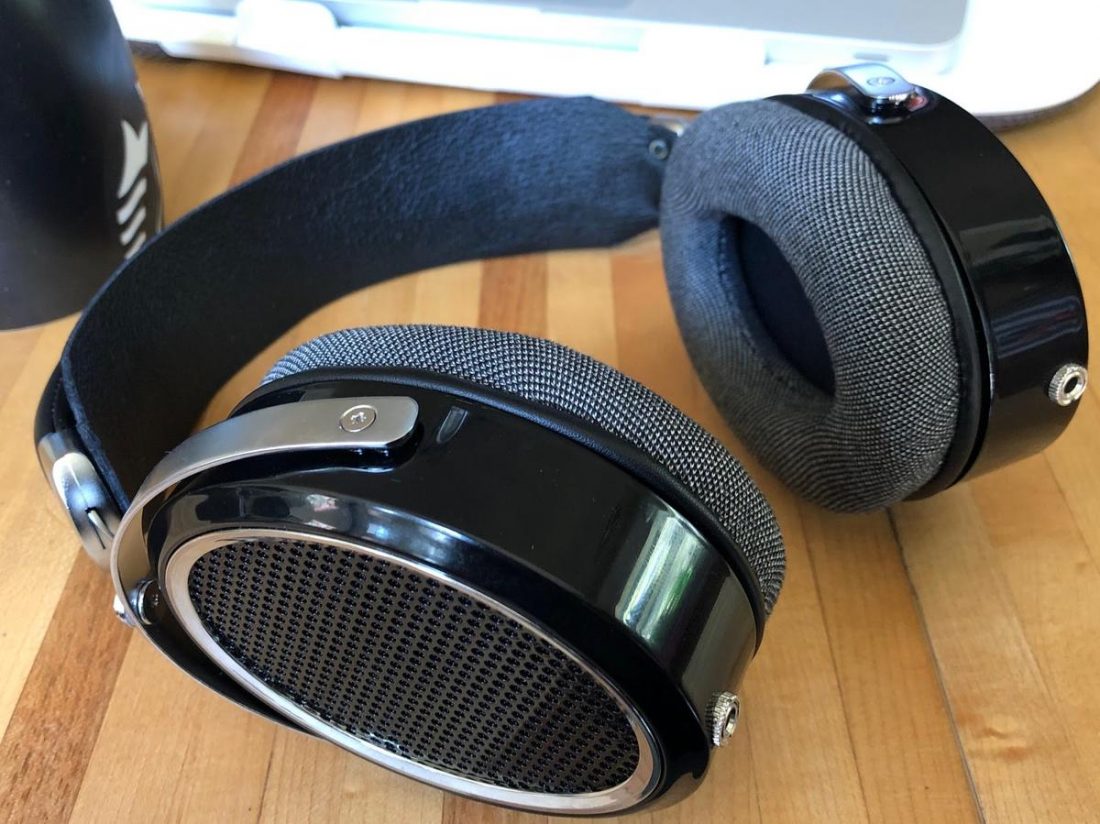Almost a year and a half ago, Takstar released a sub-$200, open-back, over-ear, planar magnetic headphone, generically named the HF 580. Soon it was discovered that several other headphones shared a very similar (or the same) driver with different ear cups, earpads, headbands, and cables. All were more expensive than the HF 580, and some significantly more so. Perhaps the most notable alternative is the gorgeous, hand-assembled, wooden cupped SendyAudio Aiva. At more than three times the price ($600), but sharing the identical planar drivers as the HF 580, the internet was soon abuzz with dreams of inexpensive, giant-killing possibilities. Other mid-priced variations quickly hit the market, including the BLON B20 ($450) and the Monoprice Monolith M570 ($300). Serious bargain hunters, or those not put off by the idea of opening up a headphone and trying out modifications, eye-balled the Takstar HF 580 seriously, wondering if the same high-end sound as the well-regarded Aiva can be achieved for far less. If you’ve read any of my Headphonesty articles, you’ll know I’ve had plans in the works to tweak these as soon as I heard of them. After some crazy mail delays, the Takstar HF 580 finally arrived at my door. I will admit, it was with great excitement that I tore open the box and popped them on my head. Here’s what I experienced.
Takstar Overview
Takstar started as a microphone manufacturer in 1995. Since then, they have grown to 2,500 employees and now produce, in addition to microphones and accessories, headphones, portable amplifiers, tour guide systems, and professional audio products, including power amps, speaker cabinets, mixers, etc. Takstar touts their emphasis on research and development and quality control. To date, Takstar owns almost 400 patents. Takstar is the original equipment manufacturer (OEM) for several popular gaming headsets, including the HyperX Cloud Series as well as the Cooler Master MasterPulse MH751 and MH752.
Takstar HF 580 Specifications
Driver: Planar magnetic full range unit Driver Dimension: 76 x 97 x 12.4 mm Impedance: 32Ω ±20% Frequency Response: 15Hz-25KHz Sensitivity: 90dB/mW ±3dB Rated Power: 10Mw Peak Power: 20mW Cable: 4mm x 3m non-detachable cable Connector: Stereo 3.5mm TRRS Net Weight: 550g Color: Black
Takstar HF 580 Packaging
When the delivery person handed the box to me, and I noticed the branded Takstar tape, my jaw fell open. Due to mail mix-ups, I’d genuinely given up hope on the HF 580 ever arriving. The outer packing box looked a little worse for wear from its worldwide travels, but thankfully the retail box inside was in fine shape. The interior box is attractive and classy. The cardboard sleeve is eye-catching in white and red. It’s clear this isn’t a North American released product as there is fairly minimal English translation on the exterior. After removing the slide-off top, you are greeted by the headphones securely cushioned in sculpted black foam with an instruction manual and extra pair of ear pads sitting on top. The whole presentation is professional and high-quality.
In the Box
Takstar HF 580 headphones Screw-on 3.5mm to 6.35mm TRS stereo adapter Two pairs of ear pads with plastic mounting rings (fabric and protein leather) User manual
Just the basics and not much else. It’s nice to get a couple of ear pad variations and to provide a second set of the plastic mounting rings is appreciated, since the rings don’t feel too sturdy and I fear breaking one when changing pads.
Cable
The overly long (3m!), and non-removable cable is pretty ridiculous. Bluntly, there is no good reason for it; it couldn’t have saved that much in manufacturing costs. Simply making the cable removable with a couple of 3.5mm mono jacks would give the end-user the ability to change cable length easily and inexpensively. As with all fixed cables, if you damage it (for instance, by accidentally running over the long cable with a rolling desk chair), it can’t be easily fixed. Either send it all back to Takstar or break out your soldering iron. I’m assuming the original idea was for a headphone to be used in a studio, as the sturdy cable would seem most at home in that environment. Its rubbery finish feels decent and isn’t microphonic. The metal 3.5mm plug, spring strain-relief, and screw on 6.35mm adapter are plain but entirely functional.
Takstar HF 580 Design
The name ‘Takstar’ unfortunately shares much of the same sound as ‘tacky,’ and that aesthetic is what the HF 580 struggles to avoid. The shine of the gloss black plastic and the plain silver steel does imply a cost-cutting approach. The HF 580 appears to be a product designed to meet an aggressive price point. The plastic cups are also likely a significant influence on the overall sound signature of this headphone. Most of the other headphones that share these drivers feature wooden bowls and a more open back grill design. Inside the HF 580 cups, there is no attempt at dampening or sound absorption with lots of hard, smooth, plastic surfaces. The two pads included with the HF 580 both come with the necessary, thin plastic mounting rings to hold them to the cups. The pads are both made of memory foam, but for comfort, heat dispersion, and sound quality, my preference is for the tweed-like fabric material over the perforated pleather ear pads. The band is rugged feeling, and all visible surfaces are made of metal. It is minimally padded and wrapped in a relatively premium-feeling, black, synthetic leather material. The construction is sturdy if not overly luxurious. This metal design and token padding do have an impact on comfort.
Comfort
I weighed the HF 580 (with the fabric pads and without cables) as 465g. When one asks, “what are the heaviest headphones,” my beloved Audeze LCD-2 often tops the list. They do weigh slightly more than the HF580 at 535g. For comparison, at the other end of the… err… scale, I weighed the Meze 99 Classics as 270g. However, the Audeze originally came with a much broader band (4.9cm vs the HF 580’s 3.1cm band) to better distribute the weight (and I’ve since added an even wider comfort strap). The HF 580’s nominal padding and the thin band just aren’t enough to properly support a headphone this heavy. Long-term wearing comfort isn’t terrible but would benefit from a wider band and additional padding. Clamp force is initially quite high but easily remedied by a firm bending of the strap in the opposite direction using both hands. I never understand those that complain about a tight clamp but are unwilling to simply bend the spring steel band. It’s a 10-second fix to tailor the clamping force to your preference. The ear pads are reasonably thick (approximately 12 mm) and are quite comfortable. The soft fabric pads are much cooler on the ears for extended listening sessions.
Internals
At the heart of the HF 580 is the large planar magnetic driver unit. Takstar describes it as “…high sensitivity, wide frequency response and dynamic… Ultra-large planar diaphragm, even vibration & low distortion, powerful LF, full MF, transparent HF.” The HF580 driver incorporates a neodymium (NdFeB) magnet. This is the most widely used type of rare-earth magnet and is the most powerful type of permanent magnet. The neodymium magnet was developed in 1984 by General Motors and Sumitomo Special Metals. The driver utilizes an ultra-thin (0.005mm) German aluminum foil diaphragm, with a non-glue design. This thickness is similar to the popular HiFiMan planar drivers. Takstar claims that the driver’s “…sub-frequency reaches 10Hz”.
Takstar HF 580 Sound
The Takstar HF 580 headphones are not warm sounding headphones. They have an aggressive mid-forward sound signature, with rolled off high frequencies, and controlled if somewhat subdued bass. The pre-installed protein leather pads exacerbated the mid-forwardness, and I quickly moved over to the fabric pads. This change immediately produced an improvement, mellowing the sound signature somewhat and decreasing the harsh tonality. The general complaint with the sound signature of the Takstar HF 580 is a somewhat unnatural mid-range. They are often described as having a ‘hollow’ or ‘ringing’ midrange tone that isn’t present in other headphones that utilize the same drivers. The midrange does sound a bit too forward in the mix, and this impacts how natural they come across. Most of the user modifications to the HF 580 involve taming this tendency. I auditioned the HF580 with a variety of sources and amplifiers. I found that the solid-state xDuoo XD-05 Plus tended to exaggerate the midrange harshness. They paired better with the Hagerman Tuba and Millett NuHybrid amplifiers, the tubes seemed to mellow out the sound, and overall they were more pleasant to my ears. The Chord Mojo worked decently for portable use (or as portable as you can be with a fixed 10-foot cord). Overall, the Takstar HF 580 has very good detail reproduction, awarding the impression of above-average separation and imaging. Soundstage is relatively narrow for an open-backed headphone, but I’m a big fan of the Sennheiser HD650, so this tendency doesn’t put me off. My taste preferences tend towards tubes and the darker sound signature of the HD650 and the Audeze LCD-2. I’m okay with rolled-off treble, but I do love a natural, weighty, and warm midrange sound. I appreciate headphones that aren’t at all harsh, and that let you float for hours in the depth of the music. As much as I wanted to, I couldn’t quite get there with the stock HF 580.
Bass
Rather than the bass-dominant sound that is often equated with planar magnetic headphones, the HF 580 are somewhat relaxed in their low-frequency reproduction. They seem capable of hitting all the low notes, but they certainly do not overwhelm the other frequencies. Bass is well-textured, and dives deeply, but doesn’t impart a visceral feeling or slam. For better or worse, the HF 580 does not come across as the typical v-shaped sound signature that is present on many consumer headphones these days. They do seem to respond quite well to equalization, so if you find yourself wanting more, you can add a bit of bass boost and punch up the sound.
Midrange
I find the midrange on the HF 580 to be somewhat too sharp and aggressive for my tastes. Upper midrange and lower treble frequencies seem to dominate the sound. This contributes to the impression of detail, but I find them a touch fatiguing for longer sessions. Acoustic music can take on a slightly nasally or hollow-sounding voice. This really wouldn’t be an issue if the mids were just dialed down a bit in the mix.
Treble
Treble frequencies seem recessed compared with the midrange. Beyond that, the HF 580 rolls off fairly quickly, and there isn’t a whole lot of high brightness or sparkle. This roll off appears to emphasize the forwardness of the midrange. Some may miss more high-end extensions, but in general, this sort of signature suits my listening tastes fine.
Takstar HF 580 Modifications
Opening the HF 580 up, it appears as though Takstar created plastic cups designed simply to fit the drivers, with no attempt to alter or tweak the sound. This is definitely the most cost-effective approach. Source decent drivers, build basic cups, combine, and hope for the best as far as the final sound goes. But what defines a great sounding headphone from a mediocre one is by degrees. Tuning is part science and part art, but success is easy to hear. This is the territory that screwdriver-armed modders don’t fear to tread. They know that with a touch of luck, a bit of trial and error, and perhaps a little scientific method, they can produce something greater than the sum of its parts. The common modifications for the Takstar HF 580 fall into 5 general categories: Almost always, the first place to start with sound modifications doesn’t involve a screwdriver. The biggest improvements can usually be had by simply swapping the ear pads. Unfortunately, this can be an expensive option, so it’s always best to let someone else be the guinea pig and recommend the superior options before you start wildly ordering scores of new pads online.
Ear Pad Replacement
The general consensus seems to be that the uniquely shaped SendyAudio Aiva pads are designed specifically for this planar driver and are intended to tune it properly. As a result, the Aiva pads are touted as clearing up the midrange, removing hollowness, improving timbre, decreasing shoutiness, and generally addressing the main sound issues attributed to the HF 580. As an additional bonus, the Aiva pads fit the HF580 without further modification and are thicker and more comfortable than the stock pads. Another popular pad option is the Monoprice M1060 Sheepskin pads, although they are too large for the HF 580 ear pad retaining rings and must be secured with tape. Reviews are mixed for these ear pads, but generally, they seem to improve the bass depth and dynamics more so than the Aiva pads. Regardless of what pads you decide to go with, I’d highly suggest getting the pads first before trying any extensive interior sound modifications. In the end, you’ll be trying to tune what sounds best for the pads you are using. Of course, for the purposes of this review, I didn’t follow this sage advice.
Interior Damping
Controlling unwanted reflections inside the cup is typically accomplished with soft material adhered to the sides or stuffed into the small spaces. Some modders use bits of memory foam pressed into interior cavities, while others use adhesive foam insulation or cotton balls. The intriguingly named WolfHammer Mod essentially consists of a strip of 3/8” wide adhesive foam insulation around the interior cup circumference and a cotton ball over part of the grill. A foam circle is also added in front of the driver under the ear pads to tame the treble. In general, modders report that the tinny, shouting or hollow sound profile of the HF 580 is greatly reduced by controlling interior resonance.
My Modifications – Memory Foam Dampening Rings
This is the first modification that I attempted, and it has made tangible improvements in the sound quality. While digging through my headphone accessories drawer (picture a junk drawer filled with ear pads, adapters, headbands, and a variety of modification parts) I found a pair of soft memory foam rings originally intended for Grado ear pads. These foam pads are tapered on one edge and happen to fit perfectly within the HF 580 cups, compressed between the driver and the mesh grill. Opening the cups up is a simple matter of removing 4 screws, and both the ear pad retaining ring and driver fall right out. The driver stack is securely fastened by small bolts around its circumference, so with an iota of caution, you don’t have to be too worried about hurting anything, or with the driver coming apart. Fit the memory foam ring into the cup, with the tapered side facing the driver. Note that this reduces the open grill area as well. Gently push the driver stack and retaining ring back into place (compressing the foam) and refasten the 4 silver Phillips screws. The bass and treble have both been raised in the mix. All of a sudden, that flat, deep planar bass is there with aplomb. Gone is the nasal midrange, and in its place is a much smoother transition into the higher frequencies. I’ve gone back and forth, A-B comparing my LCD-2 and the HF-580 using the Chord Mojo’s two outputs (the LCD-2 are quieter and must be volume adjusted to compare). After the addition of the foam, the Takstar are now a long, long way towards that sound signature I love so much.
Grill Modifications
The back grills of the HF 580 are rather enclosed and consist of a fine-holed plastic mesh with an underlying filter. Some users have reported that removing the grill greatly increases bass response, but this does leave the driver and wires exposed. The HiFiMan HE4XX has a similar grill structure and has been the source of many grill removals and open mesh replacements by the modification community. It is likely that some frequencies are reflected from the plastic grill back to the ears, so this sort of modification will impact the sound. Other modders have experimented with covering the grill partially or completely and changing the HF 580 into a more closed-back design.
Detachable Cable
Regardless of what sound modifications you pursue, if you are going to open up the HF 580, I would highly recommend adding the sockets of your choice to allow for a detachable cable. My plan was to add 3.5 mm jacks so I can simply use the HarmonicDyne Helios or Meze 99 Classics cables I have on hand.
My Modifications – Adding 3.5mm Sockets
This one has nothing to do with how they sound, but everything to do with how much I like the Hf 580. I happened to have a couple of inexpensive 3.5mm TRS sockets on hand that looked like they would fit with little physical modification to the cups. The first step was to determine which of the solder legs on the jacks corresponded to the correct polarity on the cables. This is done with a multimeter set to continuity resistance checking (most have an audible signal mode). Plug the headphone cable into the new socket and use the source side jack to pin it out. Once + and – were determined for each socket, I soldered on a couple of 3 cm lengths of silicone wrapped copper wire (chosen because it is very flexible and the wires are going to have to bend significantly to fit when installed). Note that on the drivers themselves, negative is a black wire, and positive is a red wire, although the original headphone cable wires are blue to positive and red to negative (just to make things confusing). The stock cable is easily removed by pushing it up into the cup and clipping off the retaining metal clip. Eventually, I’ll add a 3.5 mm mono plug to each cut-off cable end so it can be used again. It turned out that the 3.5mm jacks fit the premade cable holes well (if just a bit small), so I didn’t have to modify the cups in any way. I poked the jack through from the inside and screwed them down securely with the external round nuts. Finally, I tucked the wires and memory foam back in. After tightening down the 4 screws (don’t forget the ear pad retention ring – I may have overlooked this once) all is good. The HarmoicDyne Helios cable I have on hand is a perfect fit and is OH-SO-MUCH-BETTER than the stock cable. I’m talking about looks and feel here, as I didn’t hear any difference between cables.
Comfort Modifications
If you are going to use the stock band, the easy solution is to add some (2 or 3) adhesive foam Dekoni Nuggets to the bottom of the headband. I set out to build a DIY comfort strap (attached to the 4 screws on the band), rather than going the $30 Nuggets route. For detailed information on how to make a DIY comfort suspension strap, check out my How to Mod the Fostex TR50 Mk3 article.
Conclusion
A very big thank you to Takstar for sending the HF 580 to Headphonesty for review – it’s quickly becoming a favorite. Due to mail delays, it was a marathon to finally get them here (almost five months!) so this review is coming out far later than expected. You can purchase the Takstar HF 580 from AliExpress for $200. On one hand, there aren’t a lot of planar headphones to compare the HF 580 at or near its budget price range. The Fostex T50RP comes to mind, but the Fostex requires new pads at a minimum to be usable. On the other hand, because the drivers are shared with several other models, it’s impossible not to compare the Takstar HF 580 with these more expensive alternatives. At $300, the Monoprice M570 planar headphones are the closest priced alternate sharing the HF 580 driver. For 50% more money, you receive nicer wooden cups and band, with a storage case, and a removable cable. However, reports are that they sound much more alike than different, so you’ll have to decide if the extra money is worth a similar sound with better aesthetics and accessories. Unquestionably the BLON B20 and SendyAudio Aiva have far better build quality and upscale looks. Reportedly they both also sound significantly superior. But at 2-3 times the price of the Takstar HF 580, they had better! Note that the B20 and Aiva, while appearing much the same, have differences between them: It will never be possible to modify the Takstar HF 580 to be the same as the Aiva (as much as I’d like to – hoo boy, they sure are pretty). However, some easy modifications to improve the stock sound and comfort (such as purchasing the Aiva ear pads) certainly narrows the audible gap between them. The SendyAudio Aiva has better clarity through the mids and a bit of extra energy in the upper mids and in the treble compared to the BLON B20. The BLON B20 has more body to its presentation, but has less definition. The BLON B20 has bass that is a little bit fuller.” – Audio Primate Are the Takstar HF 580 absolute giant-killers out of the box? Not really. But it’s a matter of sound signature and my taste that holds them back. I’m just looking for a less midrange-aggressive sound in my headphones. But, and it’s a Sir Mix-A-Lot sized, big BUT here, the remarkably inexpensive and easy to do additions of a couple of memory foam rings fixes almost everything that I didn’t love about the HF 580 sound signature. In addition, a couple other easy improvements to comfort and usability go a long way to bolster how much I appreciate the Takstar HF 580. All this doesn’t mean you are wrong for loving the stock HF 580 sound (or aesthetics). For under $200, you can have a lot of the goodness that planar brings, and a remarkably strong foundation to improve upon.
